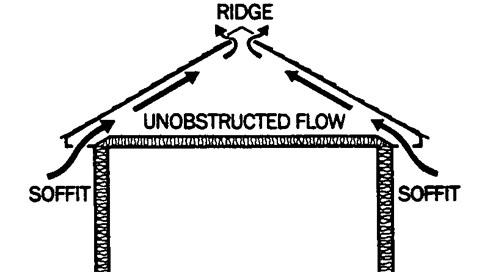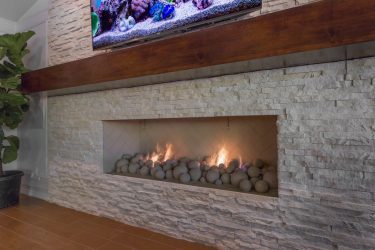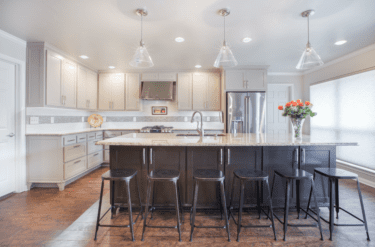No better time of year to discuss proper attic ventilation than August. I’ve crawled around a few attics this month, and as always, I am amazed at the huge difference in temperature of properly vented attics compared to improperly vented ones. An improperly vented attic can be as much as 50 degrees warmer than an unvented attic. If it is 100° outside, and your attic isn’t vented, it could be 150° up there. This heat load on your home air conditioning is much more than anything you could be losing through non-insulated walls and single-pane windows.
Improper attic ventilation and insulation are the biggest money wasters you can have in your home. Here are some thoughts to save you money:
Proper Attic Ventilation
- Don’t use fans, turbines, or any ventilation system that has moving parts. They will fail sooner rather than later, probably don’t really work like you think they might, and are just costing you money.
- Use a soffit and ridge venting system. If properly installed, this is the best way to go. It is relatively inexpensive to install in comparison to the return you’ll get from electrical savings and a more comfortable home.
- If you have a hip roof with few or no ridges, gravity feed or hood vents are a good option, but only if enough are installed. A professional roofer or contractor can calculate the volume of the air in your attic and determine how many soffit (intake) and hood (exhaust) vents are needed to turn the air 12–15 times per hour, which is what is needed to effectively cool your attic. The hot air in the attic rises and escapes from the ridge or hood vents; the air is replaced with cooler outside air that gets sucked in from the soffit vents. Always make sure the soffit vents aren’t blocked.
- Get a remote thermometer and put the sensor in the attic and monitor it. This will help you understand the heat fluctuations and help determine what, if anything, needs to be done. Your attic should never be more than 20 degrees hotter than the outside temperature. In the winter, it should be roughly the same temperature as outside. If it is warmer than that, you are losing a lot of money and home comfort.
Insulation
- Have your attic insulated to R-38, or about 18” of fluffy insulation.
- If you have six inches of broken down insulation, putting 12” of new insulation on top of it isn’t like having 18” of fluffy insulation. It’s the air in the fluffy that gives you the insulation benefit.
- If you have broken-down insulation, have it removed. It’s a nasty job, and a little pricey to have done, but the long term savings will be beneficial.
- Make sure the soffit or intake vents aren’t blocked. Sometimes it is a good idea to remove the soffit vents on your home and push the insulation back so the air is not restricted.
- Don’t worry about radiant barrier. It works in a few special situations, but if you get your attic vented properly, you won’t need it.
Please let us know if you’d like to have your Tarrant County home’s attic and insulation assessed. We can let you know if your attic is as energy efficient as it needs to be and help you make it more energy efficient if needed.
Stay cool; fall will be here before we know it.
Mike








